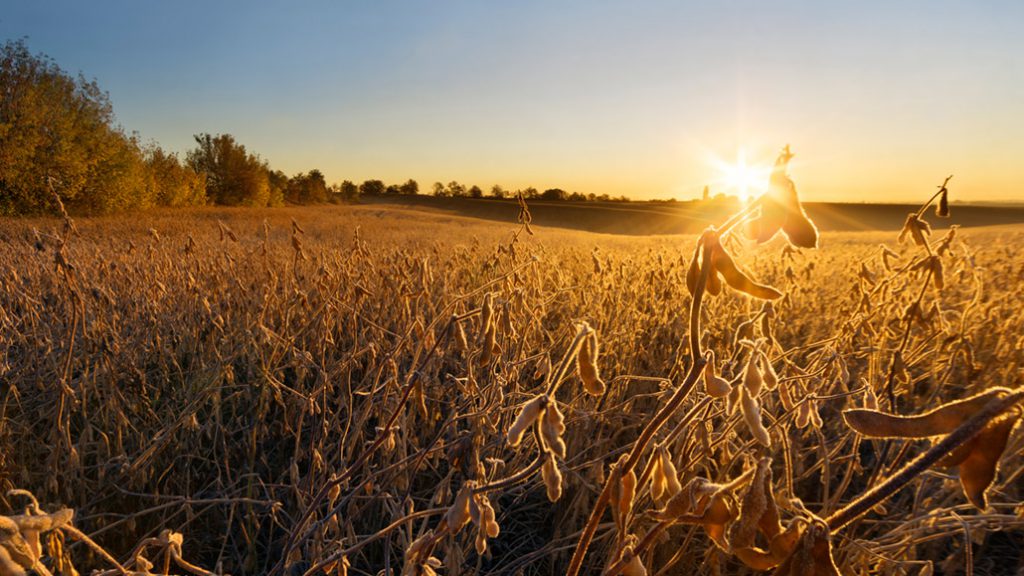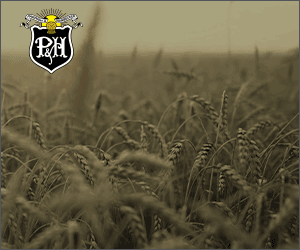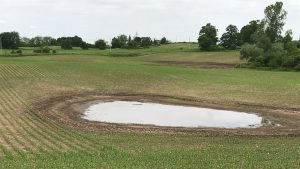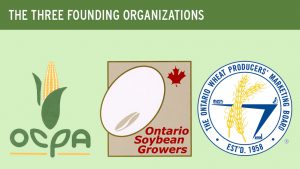The view from the grassroots
FARMER-MEMBERS REFLECT BACK

THE DECISION TO form Grain Farmers of Ontario was the culmination of years of discussion and debate by farmers from across a geographically large and agriculturally diverse province. Ontario Grain Farmer reached out some farmer-members who have been with the organization from the beginning to find out what they think are the successes — and the challenges — of the organization as we reflect back on 10 years.
Tom Dobson, a farmer-member and delegate from King Township in District 11 (Dufferin, Simcoe, Halton, Peel, York), who was formerly involved with the Ontario Wheat Producers’ Marketing Board, says he was supportive of the merger of the three legacy organizations. “I thought there would be some really good efficiencies,” he says, referencing the value in pooling the resources of the three organizations. But where he saw the greatest potential was the power of 28,000 grain farmers speaking with one voice when advocating to government.
“When it comes to dealing with the government, the bigger the hammer, the better,” he says. “I thought we would have more strength together rather than as individual organizations.”
But not everyone agreed with Dobson’s opinion at the time. Joe Kerr, a Brigden-area farmer and delegate in District 3 (Lambton), says he advocated against forming Grain Farmers of Ontario. Kerr was involved with both the soybean and wheat legacy organizations, and “I thought we would be losing representation,” he says when looking back at the merger. While he agreed that there were many common issues between the three commodities, he felt that there was still value in having three different points of view on some issues. “If there were still three boards, one would likely push more on some things than others,” he says. “In 10 years, we haven’t gained much in terms of government support.”
But, Kerr concedes, there have been some positive outcomes over the 10 years of Grain Farmers of Ontario. The ability to attract and retain people in leadership roles is one of the benefits of one organization representing grain farmers in the province. “In some areas, it was hard to fill three boards,” he says. “Often a third to half of the soybean and wheat boards were the same people.” He also points to events like the March Classic, which he says has been something that brings farmers together every year. “With three boards, we wouldn’t be able to run something like that.”
Opportunities for networking is one of the benefits of the formation of Grain Farmers of Ontario for Lanark County farmer Andrew Dawson, who, unlike Kerr and Dobson, had not been involved with any of the three legacy organizations. “Getting to know other progressive young producers within our district has been a highlight for me,” he says.
“I was intrigued to get involved,” he says. “I was encouraged by the concept of getting everyone together and speaking with one voice.” The early days of the organization were challenging, he says, as eight counties — covering a large swath of eastern Ontario — were brought under the umbrella of District 13 (Prince Edward, Lennox, Addington, Frontenac, Lanark, Leeds, Grenville, Renfrew, Ottawa), though he recalls that the organization quickly pulled together. “Members who were deeply rooted in the legacy organizations were referring to Grain Farmers of Ontario within a year, and became such a cohesive group.”
Brad Nimijohn, who farms near Millgrove in District 6 (Haldimand, Brant, Hamilton, Niagara), is another farmer-member who hadn’t been involved with any of the legacy organizations, but joined as a delegate in Grain Farmers of Ontario’s first year. As a delegate, he says the highlight for him has been sitting on the Grain Farmer of Ontario’s research and communications committees.
He points to Grain Farmers of Ontario’s research programs as a positive outcome of the merger. “Being one organization, we’re able to leverage research dollars a lot more efficiently,” he says. He also feels that the organization has been responsive to the needs and wishes of the farmer-members. “We’re able to position which research projects we pursue based on feedback from Grain Farmers of Ontario members.”
LOOKING FORWARD
One of the challenges, going forward, for Grain Farmers of Ontario is consumer awareness and education, according to Jason Pyke, a District 13 delegate from Wolfe Island. “There is a lot of false information on the internet and social media,” he says. “We need to provide a positive spin on what we do.”
Nimijohn agrees, and believes that Grain Farmers of Ontario is well positioned to meet that challenge head on. “Good in Every Grain is an absolutely fantastic program,” he says. “It’s not something that we would have been able to do before. We’re a lot better positioned than we were 10 years ago.” •












